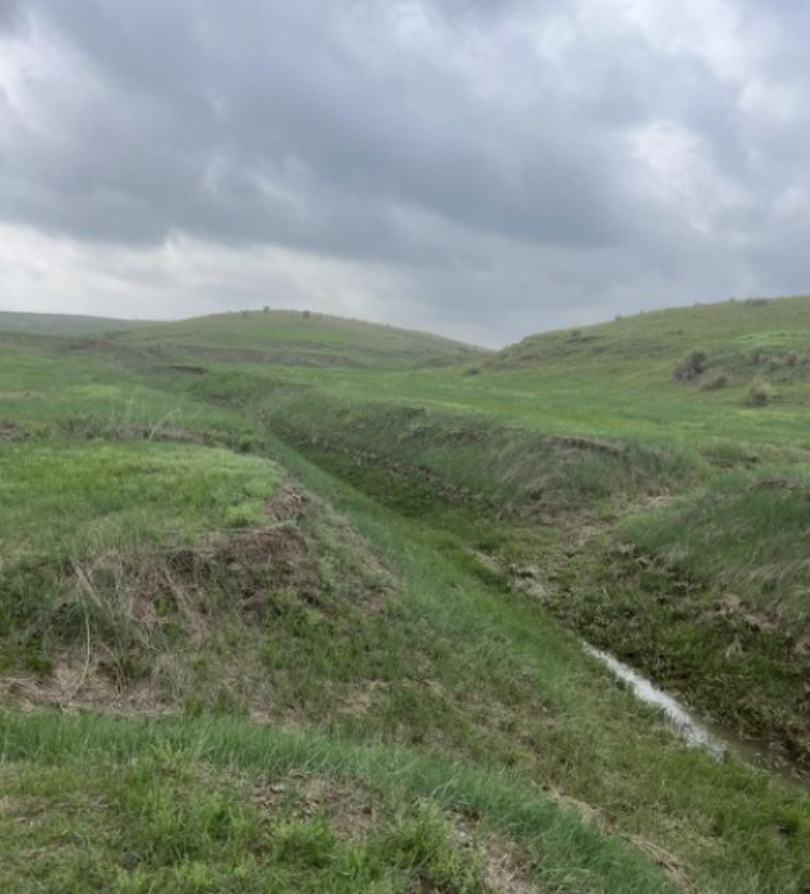
Moisture management is a hot topic no matter where you’re growing crops. Some people struggle with too much of it, some people never get enough. Just like Goldilocks, we all want the “just right” amount, though that “just right” amount almost never seems to happen.
Luckily, there’s a way to achieve that “just right” amount of moisture more consistently. Healthy soil acts as a buffer for plants against environmental conditions. While it’s true that cover crops do require water to grow, they also utilize that water to produce valuable carbon root exudates or sugars that feed the underground system. The addition of diverse root exudates and the microbial activity that follows lead to huge soil health benefits like improved soil aggregation and increased soil organic matter that in turn increase water holding capacity exponentially. When it becomes a regular practice, cover crops help farmers hit that “just right” amount of water more consistently. It’s a paradox that thousands of regenerative farmers have seen in action.
“I don’t have to wait for my fields to dry up to get out and plant in the spring.”
“The soil feels like a sponge when you walk on it.”
“I was able to raise a crop with no irrigation in the middle of a drought when all my neighbors watched theirs burn up.”
Have you experienced something similar through the use of cover crops?
Cover Crops in “Not Enough” Water
The key to success with covers in drier climates is proper management. Over time, the use of cover crops will improve soil organic matter, infiltration rates and water holding capacity, allowing you to capture what little moisture there is in arid environments. A fall planted cover crop will help capture snow over the winter as well. While any growing plant will use available soil moisture, it’s important to note that plants use about 50% in their vegetative stage and the other 50% to develop a seed. Timing and management is vital to not letting your cover crop steal moisture from the cash crop. Be sure to terminate your cover crop before it starts developing a seed to ensure it will not use any more moisture than you want it to. Farmers can also use cover crops that will winter kill, so the cover crop still captures winter snow, but won’t utilize any spring moisture.
Cover Crops in “Too Much” Water
On the opposite end of the spectrum, many people experience wet springs with fields that are sloppy and too wet to plant. Cover crops can help utilize that excess moisture in the spring. A fall planted cover crop that will overwinter can help utilize that early spring water and improve the infiltration rate of the spring moisture. In general, environments with higher rainfall can utilize a higher seeding rate of cover crop.
The Power of Mixes
The power of a mix lies in the power of a diverse biological system. Different families of microbes interacting with different families of plants creates an underground economy of nutrients and moisture. It’s been shown time and time again, that a diverse mix performs exponentially better compared to a monocrop. Planting a fall cover with rye, winter peas, flax, and rapeseed automatically brings in four different plant families that will house different microbes. That mix will utilize water and nutrients more efficiently than a rye cover crop by itself, due to the amount of work going on underground to help the plants access the nutrients they need.
Other things to consider.
Historically, the plant species in a region are adapted to the amount of rainfall in that environment. The eastern US vegetation looks much different compared to the Western Great Plains. As farmers it’s important to match the crop to the environment.
The Goldilocks Option
So whether you’re dealing with too little or too much water, cover crops and soil health help you achieve what Goldilocks would say is “just right”. Every year is different across the country, and we help farmers from all over utilize covers to fit their needs. Give us a call today at 402-469-6784.
Want to talk with one of our expert sales representatives?
Fill out this form or give us a call today. 402-469-6784.
